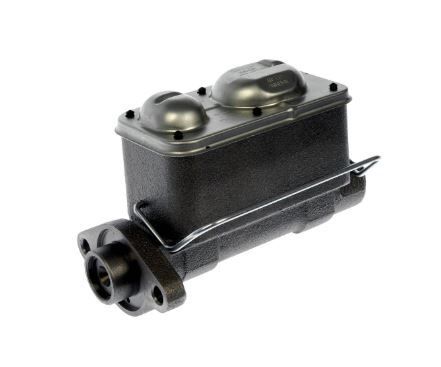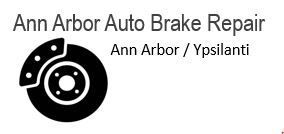When Should The Master Cylinder Be Serviced?

Understanding The Master Cylinder
YA master cylinder is the primary coordinator and director of hydraulic brake fluid to the brake cylinders on each wheel, performing this duty when actioned by the displacement motion of the brake pedal. Due to the reciprocal action of the brake valve, the master cylinders work best when there is an active reservoir attached, by which the braking system ensures that no air will enter the brake lines when the brakes are applied. The master cylinder is also a crucial participant in the brake system, by coupling the driver’s movement of the brake pedal into the clamping of the brake pads or shoes upon the brake rotors or drums. When there is degradation in either the brake oil or the master cylinder, the brakes will not perform correctly. When this happens, it is time to have the master cylinder inspected to ensure proper working of the master cylinder.
Why The Master Cylinder Matters?
A master cylinder is a hydraulic reservoir and piston mechanism, that helps push brake fluid through the brake lines of the vehicle to the brakes themselves. The master cylinder reservoir contains two chambers, each with it’s own piston that is activated by pressure on the brake pedal. When the brake pedal is pressed, the pistons push fluid from the chambers through the brake lines to the brake calipers or wheel cylinders, causing them to press the brake pad material against the brake rotors or drums which may slow or stop the vehicle as directed by the driver.
Types Of Master Cylinder:
Single Circuit Master Cylinder
- The single circuit master cylinder is a simpler and older style of a master cylinder, by which the brake pedal lever pushes a plunger (piston) inside the cylinder and shoves brake fluid through the lines and into the slave cylinders at each wheel. When the brake pedal is released, a spring inside of the master cylinder pushes the plunger back to its original position and causes a negative pressure which can pull brake fluid into the cylinder from the brake lines and the brake fluid reservoir.
- A single-circuit master cylinder distributes equal braking force to all the wheels due to the use of the single-cylinder single piston that drives the circuit. This type of master cylinder is commonly used in many 2-wheelers and some lightweight 4-wheelers (recreational vehicles).
Tandem Master Cylinder/Dual Circuit Master Cylinder
- The tandem or dual circuit master cylinder is a modified type of master cylinder in which a dual cylinder-dual piston or a single cylinder dual piston will move brake fluid within the dual circuits and into the slave cylinders at each wheel. This dual circuit action enables independent braking action that can be distributed independently between front and rear wheels, and/or left and right wheels.
- Tandem/dual master cylinders are used on almost all cars and trucks, as it is more efficient than a single-circuit master cylinder. It can provide an independent interconnectedness between wheels when braking, such that a single circuit may brake the front right & rear left wheels, while the other circuit may brake the front left & rear right wheels. This is an important safety feature on passenger vehicles.
When To Replace The Master Cylinder?
The most common master-cylinder failures occur from piston-bore wear and piston-seal failure. The classic symptom of a failing master cylinder is a brake pedal that “dives” or sinks slowly to the floor while pedal pressure is being applied. Another sign to look out for is any leaks around the master cylinder. If a seal is worn out, it may leak past the seal and onto the pushrod that attaches to the brake pedal. Also, look for any lines that connect to the cylinder for leaks. If the leak is internal from one of the seals, then the master cylinder should be replaced, but external leaks may require a line or fitting to be replaced.
Another issue that can crop up on some vehicles is using the wrong type of brake fluid. Some seals are sensitive to the type of brake fluid used in the system. Be sure to replace brake fluids with the kind that is recommended by the auto manufacturer and bleed the system. Some seals can twist in the retention groove and create a small leak (i.e., Acura/Honda). The brake fluid then can leak into the brake booster, and the brake light eventually will come on because the brake-fluid level is low. Your local brake shop should have a master-cylinder repair kit available and may be able to apply the new seals and pistons to the master cylinder of your vehicle when you bring it in.
We recommend that we check your Master Cylinder every time you bring your vehicle in for brake service. Doing this will ensure that the cylinder is gating brake fluid correctly, and has ample supply of clean fluid for repeatable braking, and that there are no stuck parts, which may impede your ability to brake your vehicle sufficiently or efficiently. If you notice any signs of low or dirty brake fluid, visit your trusted auto care center for a thorough inspection.
By being proactive and recognizing the varying types of parking brakes, their functions, and the necessity for routine inspections, drivers can ensure their vehicles remain safe and reliable. Always consult your vehicle's owner’s manual for specific recommendations about maintenance and service intervals tailored to your model. We are happy to service your emergency parking brake at Ann Arbor Auto Brake Repair. Call us up at (734) 537-7344 or request a quote at Ann Arbor Auto Brake Repair today.
